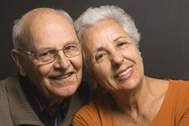Corneal Transplant (Keratoplasty) is applied successfully for the patients for whom the treatment is not succeeded with contact lenses. The veinless structure of the cornea increases the success chance of this method. A success rate of 93-96% is reported for this surgery. Approximately 20% of keratoconus patients are in need of corneal transplant for the life. Although the surgical techniques are developed the post-operative visual improvement lasts for 6 months or longer. The fact that the sutures are kept on the cornea for a long time is the most important factor over the extension of this period. The indication is the failure of contact lens, central scar affecting the vision and insufficient vision despite the contact lens. Despite the high change of success in the operation, the patients should be aware of the potential of high astigmatism development leading to insufficient vision. The sutures are generally removed at the end of the first year depending on the effect of astigmatism. Even if all sutures are removed, 50% of patients may still have distinct myopia or astigmatism. Then remaining myopia or astigmatism may be reduced by excimer laser procedures as LASIK, or arcuate keratotomy. For this reason, all sutures should have been removed at least 6 months before. Following corneal transplant, complications are rare and tissue rejection consists of large eye pupil and repetition of keratoconus. Tissue rejection is rarely observed and reversible in case the treatment is started at an early phase.
.jpg)
 Türkçe
Türkçe English
English
 German
German
 Spanish
Spanish


















